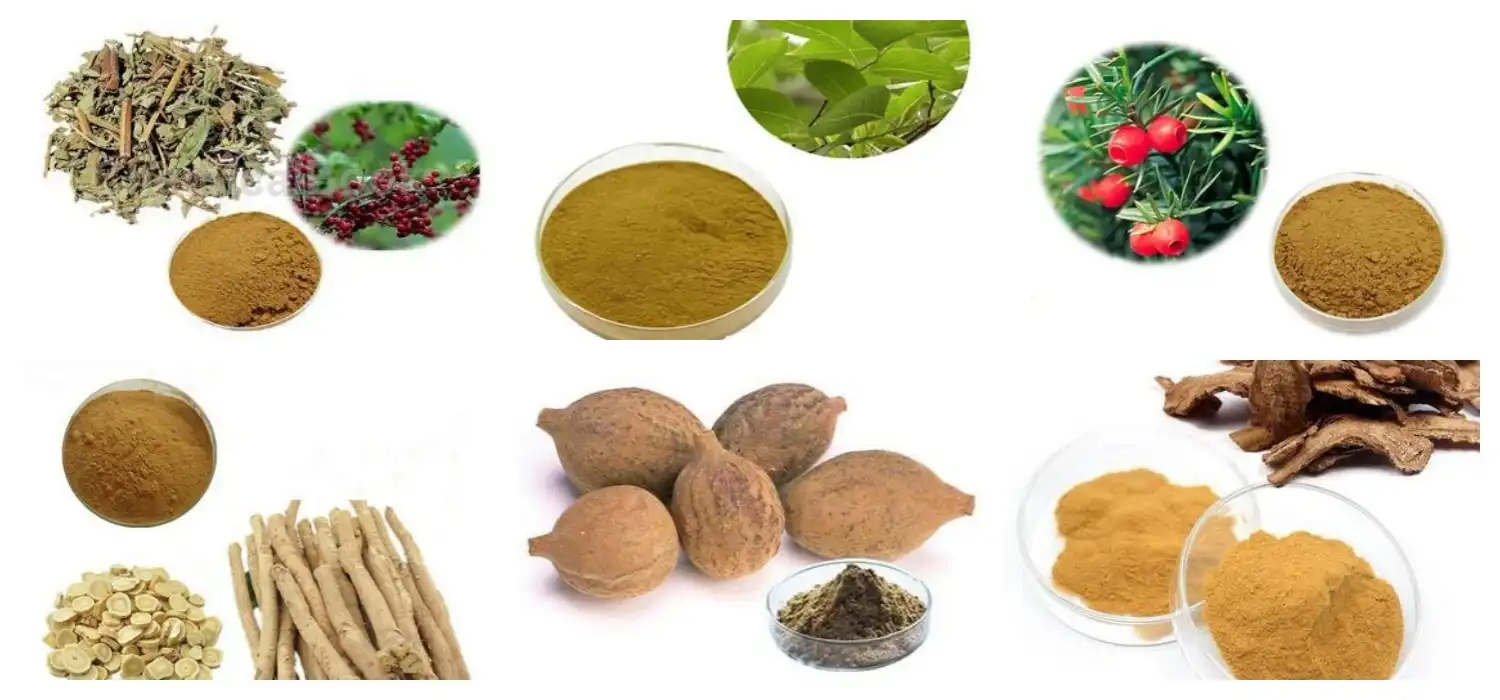The Commonly Used Solvents and Extraction Methods for Chinese Herbal Medicine Extracts
The solvent extraction method for Chinese herbal medicine extracts is a method of dissolving the active ingredients from the medicinal material tissue based on the solubility properties of various components in the Chinese herbal medicine in the solvent. The solvent has a high solubility for the active ingredients and a low solubility for the components that do not need to be dissolved.
When the solvent is added to the Chinese herbal medicine raw material (which needs to be properly crushed), the solvent gradually penetrates into the cell through the cell wall due to diffusion and osmosis, dissolving the soluble substances and causing a concentration difference inside and outside the cell. As a result, the concentrated solution in the cell continues to diffuse outward, and the solvent continues to enter the medicinal material tissue cells. This process goes back and forth many times until the concentration of the solution inside and outside the cell reaches a dynamic equilibrium. The saturated solution is filtered out, and new solvents are added many times to extract the required components completely or mostly.

Commonly used solvents
1. Water:
- Features: safe, economical, and easy to obtain, it is the most commonly used solvent.
- Scope of application: suitable for most Chinese medicinal materials, especially water-soluble components such as polysaccharides, proteins, saponins, etc.
- Disadvantages: poor extraction effect on some fat-soluble components.
2. Ethanol:
- Features: commonly used concentration is 30%-95%, organic solvent, can dissolve a variety of compounds.
- Scope of application: widely used to extract flavonoids, phenols, glycosides, alkaloids, etc.
- Disadvantages: flammable, safety should be paid attention to during operation.
3. Methanol:
- Features: large polarity and strong solubility.
- Scope of application: used for the preliminary extraction and separation of certain components in plants.
- Disadvantages: toxic, not suitable for the final product of food and medicine.
4. Acetone:
- Features: strong solubility and easy to volatilize.
- Scope of application: suitable for the extraction of various components, especially fat-soluble components.
- Disadvantages: toxic and flammable, please pay attention to safety when using.
5. Ethyl acetate:
- Features: medium polarity, good solubility.
- Scope of application: suitable for the extraction of medium polar compounds.
- Disadvantages: volatile, please pay attention to ventilation.v

Common extraction methods
1. Water extraction method:
- Steps: Heat and boil the medicinal materials with water, keep it for a certain period of time, and then filter the extract.
- Application: Applicable to most Chinese medicinal materials, especially water-soluble components.
2. Alcohol extraction method:
- Steps: Mix the medicinal materials with ethanol solution, soak or heat, and filter the extract.
- Application: Used to extract organic components such as flavonoids, glycosides, and alkaloids.
3. Ultrasonic extraction method:
- Steps: Use the vibration of ultrasound to accelerate the dissolution of the medicinal material components by the solvent.
- Application: Improve the extraction efficiency and is applicable to various solvents and medicinal materials.
4. Cold soaking method:
- Steps: Soak the medicinal materials in the solvent, leave it at room temperature for a certain period of time, and then filter the extract.
- Application: Applicable to the extraction of heat-sensitive components.
5. Reflux extraction method:
- Steps: Heat the medicinal materials and solvent together for reflux, so that the solvent evaporates and condenses continuously, and extracts the medicinal materials components in a cycle.
- Application: Suitable for medicinal materials whose components are difficult to extract.
6. Supercritical fluid extraction method:
- Steps: Use fluids such as carbon dioxide in a supercritical state as solvents to extract the active ingredients in medicinal materials.
- Application: Used for the extraction of heat-sensitive and easily oxidized components, and the extraction purity is high。

_1730691017423.webp)












